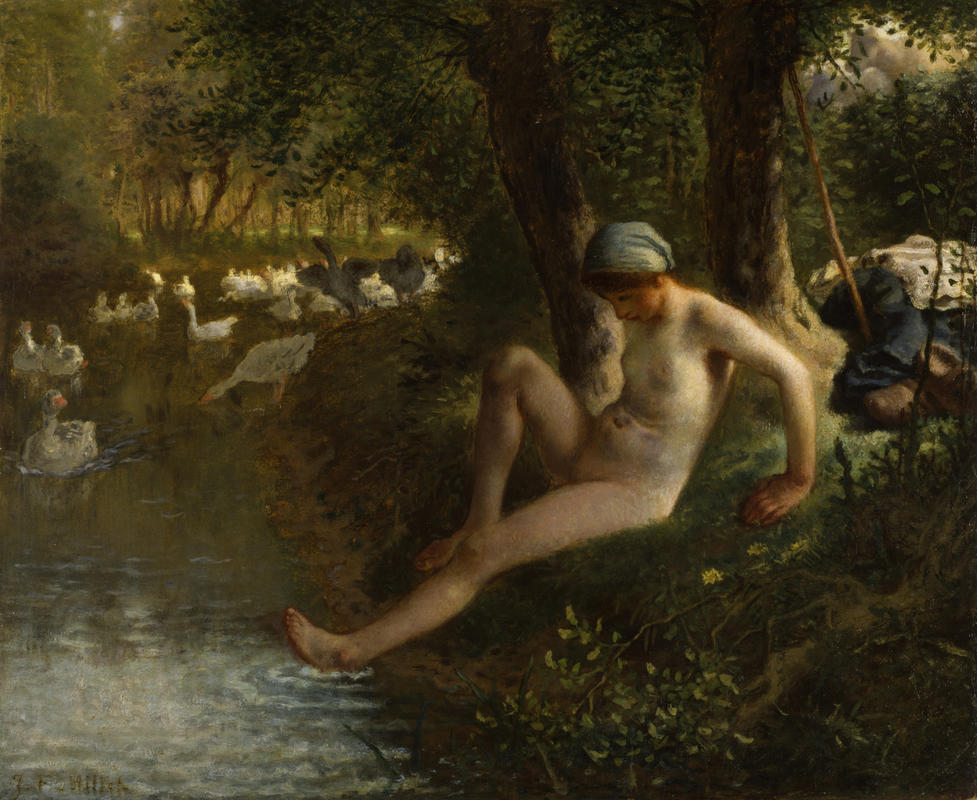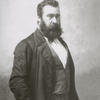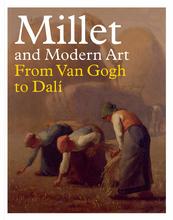More about The Goose Girl
- All
- Info
- Shop

Sr. Contributor
Centuries before Dolly Parton celebrated the steadfast ethics of the working class in “9 to 5,” Millet was doing the very same thing.
Millet’s monumental paintings of rural peasants flipped threw the art historical trope of the idealized female nude in nature for a loop. Instead of painting mythological figures, like Venus, he painted real salt of the earth kind of people. The goose girl is a working-class gal – not to mention a more tangible figure from contemporary life than the Biblical and mythological figures that had come to dominate Western European painting. For one of the first times, artists were featuring normal folk in sophisticated paintings, and people didn’t know what to make of it.
After the French rebelled against the monarchy yet again, painters and writers made art that reflected the era’s prevailingly democratic spirit. To do so, they observed and captured scenes from the modern world. Millet especially took this commitment to heart, as he took seven years and quite a few studies to complete this painting. Whatever he was doing worked, though. After catching onto the democratic tones of the political and economic statements in Millet’s work, conservative critics rejected his paintings.
Courbet was the poster child of the Realist scene, but Millet’s focus on rural peasants sets him apart from the bunch. As populations in France’s urban centers exploded, Millet depicted the unsung heroes of a vanishing way of life. After a cholera epidemic broke out in Paris after the Revolution of 1848, Millet sought refuge in the countryside. He joined a new group of friends who were exploring the beauties of the French landscape in Barbizon. Millet’s work influenced artists are far-flung as Salvador Dali and Winslow Homer.
If you’re like me, you may be wondering why this poor girl is raising geese in the first place. Before turkeys came onto the scene, geese were the traditional, main-course birds of western European holidays. It turns out that geese are cheap to feed and tough as nails, able to fend off diseases and survive harsh weather. This made geese very easy for small farmers, like Millet’s goose girl, to raise. The goose girl was way ahead of her time. Just look at how she’s raising these geese totally free-range – nearly two centuries before that would become a modern dining concern. Cue Portlandia chicken sketch.
Sources
- Bucknell, Clare. “Peasant company – Jean-Francois Millet among the moderns.” Reviews. Apollo. 21 October 2019. https://www.apollo-magazine.com/jean-francois-millet-modern-artists/. Accessed 16 December 2019.
- European Cuisines. “Western Europe: Roast Goose for Christmas.” https://www.europeancuisines.com/Western-Europe-Christmas-Roast-Goose-T…. Accessed 16 December 2019.
- Finocchio, Ross. “Nineteenth-Century French Realism.” In Heilbrunn Timeline of Art History. Department of European Paintings. The Metropolitan Museum of Art. October 2004. https://www.metmuseum.org/toah/hd/rlsm/hd_rlsm.htm. Accessed 16 December 2019.
- National Gallery of Art. “Jean-Francois Millet.” Collection. https://www.nga.gov/collection/artist-info.1720.html. Accessed 16 December 2019.
- The Walters Art Museum. “The Goose Girl.” Art, https://art.thewalters.org/detail/31158/the-goose-girl/. Accessed 16 December 2019.
- Van Gogh Museum. “Jean-Francois Millet: Sowing the Seeds of Modern Art.” Press Releases. 12 June 2019. https://www.vangoghmuseum.nl/en/news-and-press/press-releases/jean-fran…. Accessed 16 December 2019.












